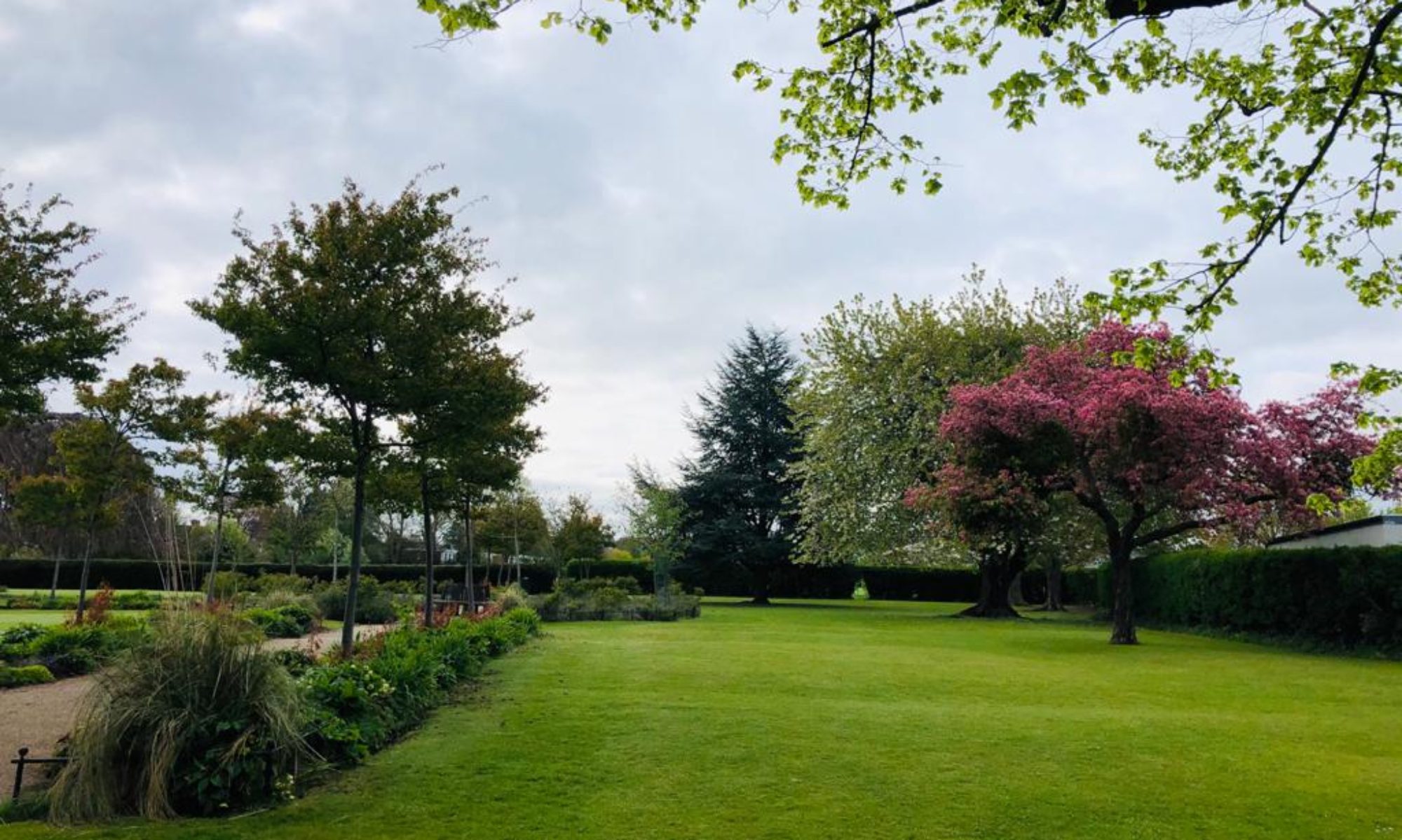The following is compiled from people’s memories of the gardens…
 | |
| Gardens with summer house |
The gardens were locked at night, the railings not being removed until the Second World War. Opening times were posted on a board at the entrance to the gardens and the park keeper (who lived at 90 Naunton Lane) was responsible for locking up. Woe betide any children taking their time about leaving after he had blown his whistle! Children seen misbehaving or generally being naughty would find the keeper’s keys thrown at them – “and it hurt”! One boy carving his initials on a tree was banned from the recreation field for two weeks. Children were not allowed in the garden unless given permission by the park keeper. No games were allowed in the garden – they had to go through to the recreation field. The swings and giant strides were on the right hand side of the field near to where the present day pavilion is situated. “Giant strides” (for those readers who are too young to remember) consisted of a 15ft high central post like a telegraph pole with a wheel bearing at the top. Ten chains were suspended from the bearing, each having a wooden crossbar handle about 3 feet from the ground. Children would run around the central post – faster and faster – until they would literally “take off”.
The gardens were longer in the 1900s. They extended on to the recreation field as far as what is known as the “tump” – the trees on the left hand side were about 50 yards further on from the present boundary hedge. School Sports Days – very grand affairs – were held on the field. There were sideshows with Cheltenham rock and other delights for sale for the small children. Prizes for winners of the races included tennis racquets and cricket bats.
At the far end of the St. Clair Ford Avenue there were some steps up to a grove of laburnum trees where one could rest on a seat and enjoy the scent of the “golden showers”. There were some steps down to a summer house for adults to sit in – children were not allowed in on their own.
 | |
| Grove of laburnum trees, 1902 |
The drinking fountain was a source of great attraction for the children, especially small boys who used to turn on the tap, then put a finger on the end of it and direct a jet of water over any unwary person passing by – “especially the old ladies in the cottages”! There were brass cups provided for drinking: one small girl was told by her mother not to use the cup as “you never knew who had been drinking out of it”.
Accounts vary as to the plants in the gardens. In springtime, all along the front of the Hay Cottages, grew narcissi. These borders were looked after at that time by the park-keeper, Mr Read. Agapanthus were planted along the St. Clair Ford Avenue, and as can be seen from the old photographs, there were agaves in large terracotta pots, trailing plants in urns, various shrubs on the lawns, and rose arches leading up from the entrance to the drinking fountain – all must have made for a colourful garden.
The Emmanuel Church choir used to sing in the park and the Salvation Army held services there as well as giving concerts. The bandmaster, at the end of the concert, would ask if any child would like a turn at conducting. When the challenge was taken up, no matter how little musical knowledge the “young conductor” had, the members of the band would follow him or her faithfully, resulting in a cacophony of sound in variable slow-quick time!
 | |
| Steps leading from poplar avenue to laburnum grove |
At the far end of the sports field was a pavillion which is remembered by several residents as being called the Lamb Shed. A local farmer used to graze his sheep on the field and the lambs would play in and around the pavillion ,which was more than the local children were allowed to do. It was a “no-go” area for them!
Needless to say, a vigorous sweeping and cleaning was necessary before the pavillion could be used at cricket matches. There was an air raid shelter in the recreation field near to where the present children’s playground is situated. The children were shepherded into it whenever the siren went. One very dry summer, about 20 years ago, the outline of the air raid shelter was clearly visible because the grass on it had dried more quickley than that on the rest of the field.
The council reinforced the cellars in some houses near the park (for example Naunton Crescent, Naunton Park Road and elsewhere) with brick pillars, to create extra shelters for local residents. The railings were removed from the front of the gardens during the war but for safety reasons those in front of the school were kept.
After the war the drinking fountain, whose foundations were collapsing, was removed, too, for reasons of safety.

